Understanding Hyperbilirubinemia and Phototherapy
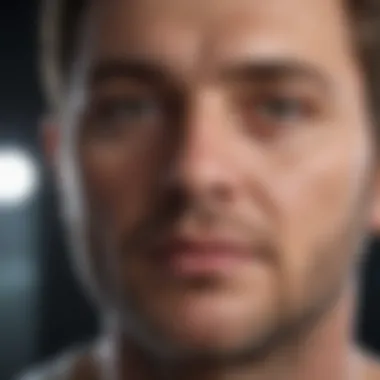
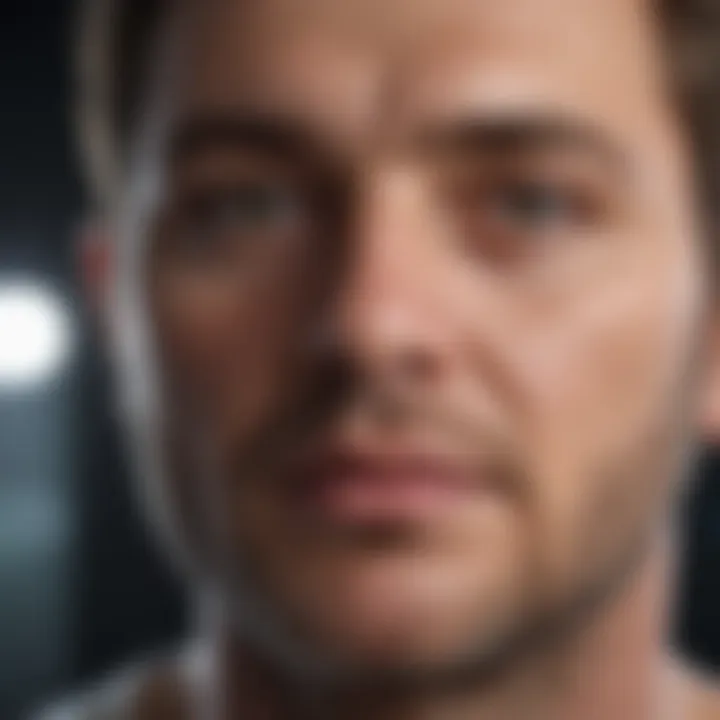
Article Overview
Hyperbilirubinemia in newborns represents a significant medical condition, one that often raises alarms for parents and healthcare professionals alike. Elevated bilirubin levels in the bloodstream can indicate the body’s struggle to cope with various physiological challenges. The importance of understanding this phenomenon goes beyond mere clinical parameters; it encompasses an awareness of the potential effects on a newborn's health and development. This article seeks to illuminate the complexities of hyperbilirubinemia, shedding light on its causes, clinical implications, and most notably, the role of phototherapy as an effective treatment modality.
Summary of Key Findings
An absolute necessity in neonatal care, this understanding of hyperbilirubinemia highlights key findings:
- Hyperbilirubinemia is primarily linked to the breakdown of red blood cells, leading to increased bilirubin production—which can be especially pronounced in newborns due to immature liver function.
- The condition is frequently categorized into direct and indirect bilirubin levels, which provide critical insight into the underlying issues that might necessitate intervention.
- Phototherapy emerges as a cornerstone in managing this condition, utilizing specific wavelengths of light to effectively reduce bilirubin levels in the bloodstream.
Research Objectives
The objective of this article is twofold:
- To provide a thorough overview of hyperbilirubinemia, detailing its physiological basis and the multitude of factors contributing to its occurrence.
- To analyze the mechanisms, types, effectiveness, and potential side effects of phototherapy in the treatment of elevated bilirubin levels in newborns. Through this exploration, readers will gain a comprehensive understanding capable of informing best practices in clinical settings, instilling confidence in management strategies, and ultimately improving patient outcomes.
Key Results and Discussions
Main Findings
The intricate relationship between bilirubin metabolism and newborn physiology is essential for grasping hyperbilirubinemia's implications. As bilirubin accumulates, it can prompt a variety of clinical signs, most notably jaundice, characterized by a yellowing of the skin and eyes. At the core of this discussion is the liver’s central role in metabolizing bilirubin, which is often impaired in newborns due to underdeveloped enzyme systems.
Phototherapy stimulates the conversion of bilirubin into water-soluble forms, enabling easier excretion via urine and bile. Research underscores its efficacy, indicating significant reductions in bilirubin levels within hours of treatment initiation.
Implications of Findings
Understanding hyperbilirubinemia underscores not just its biological implications but also its broader impact on child development. In untreated scenarios, elevated bilirubin can lead to more serious conditions, such as kernicterus, which can result in lasting neurological damage. The role of phototherapy thus extends beyond immediate treatment; it serves as a protective measure for long-term outcomes in affected infants.
"The early identification and management of hyperbilirubinemia through effective treatment strategies like phototherapy can have profound implications for the health trajectories of newborns."
By synthesizing this information, we offer healthcare professionals, researchers, and students alike a deeper insight into tackling this prevalent condition, ensuring that neonates have the best possible start in life.
Prologue to Hyperbilirubinemia
Hyperbilirubinemia is a crucial subject in medical discussions, especially when it comes to newborns. Understanding its implications not only helps healthcare professionals manage the condition effectively but also gives parents insights into their baby’s health status. Elevated bilirubin levels can lead to serious complications if not addressed timely. Therefore, comprehending the intricacies of hyperbilirubinemia lays the groundwork for better detection and treatment.
Definition and Significance
Hyperbilirubinemia occurs when there is an excess of bilirubin in the bloodstream, leading to jaundice, most notably visible in the skin and sclera of the eyes. This condition is not merely a cosmetic concern; it indicates underlying physiological disturbances that could have lasting effects if not treated. In neonates, this condition is particularly common and, although often self-limiting, it requires careful monitoring. The significance of recognizing hyperbilirubinemia lies in its diagnostic implications, guiding healthcare providers toward appropriate interventions.
Physiology of Bilirubin Metabolism
Understanding bilirubin metabolism sheds light on the various factors that can lead to the development of hyperbilirubinemia. This process includes three critical components: formation, transport, and conjugation of bilirubin. Each of these stages plays a vital role in how bilirubin is processed in the body, and disruptions in any one of them can lead to increased bilirubin levels.
Formation of Bilirubin
The formation of bilirubin begins with the breakdown of hemoglobin from red blood cells. This is a normal physiological process that occurs particularly as red blood cells reach the end of their lifespan—typically around 120 days. The key characteristic of this formation process is that it is directly linked to the body’s recycling mechanisms. An excess of hemoglobin releases more bilirubin, which may lead to hyperbilirubinemia, especially in infants whose liver functions may not yet be fully matured. A unique feature of bilirubin formation is that as it is synthesized, it travels through the bloodstream where it is largely bound to albumin. This binding acts as a transport mechanism, ensuring bilirubin is soluble and can move without causing toxicity. However, in cases of severe hemolysis, bilirubin levels can rise rapidly, presenting challenges in clinical settings.
Transport Mechanisms
Transport mechanisms are integral to the movement of bilirubin throughout the body. Once formed, bilirubin is transported to the liver where it undergoes further processing. The key characteristic of this aspect is its reliance on blood circulation, which is vital for the bilirubin to be delivered to the organ responsible for its processing. One noteworthy point here is the role of albumin again, which prevents bilirubin from becoming harmful as it travels in the bloodstream. However, conditions like newborn jaundice can increase the free bilirubin levels, leading to potential neurotoxicity if not managed properly. The downside of this transport is that newborns are particularly susceptible due to lesser binding proteins at this point, making efficient transport critical during the first days of life.
Conjugation Process
The conjugation process takes place primarily in the liver, where bilirubin is converted into a water-soluble form. This conversion is important, as only conjugated bilirubin can be excreted in bile and eliminated through urine. The key characteristic of this process is its enzymatic nature, which means any malfunction in liver function or genetic factors can severely impact bilirubin metabolism. For instance, diseases such as Crigler-Najjar syndrome exhibit a deficiency in the enzyme necessary for bilirubin conjugation, leading to persistent hyperbilirubinemia.
A distinctive aspect of this conjugation process is how it balances production and elimination of bilirubin in healthy individuals. Inadequate conjugation leads to elevated levels of unconjugated bilirubin, raising clinical concerns. Hence, comprehension of this metabolic pathway is essential for understanding how hyperbilirubinemia develops and ultimately how it must be treated, particularly with practices like phototherapy.
Classification of Hyperbilirubinemia
Understanding the classification of hyperbilirubinemia is crucial for effectively diagnosing and managing this condition. By categorizing the causes into pre-hepatic, hepatic, and post-hepatic types, healthcare professionals can tailor their approaches based on the underlying issues responsible for biliary elevation. This structure not only aids in identifying the origin of the problem but also helps in predicting the potential response to treatments.
Different causes can lead to varied clinical manifestations and require unique therapeutic strategies. Moreover, accurate classification can prevent misdiagnosis and lead to better patient outcomes. Below, we delve into the three primary categories of hyperbilirubinemia, discussing notable causes in detail.
Pre-Hepatic Causes
Hemolytic Anemia
Hemolytic anemia stands as a significant pre-hepatic cause of hyperbilirubinemia. In this condition, red blood cells break down at an accelerated rate, leading to an increase in the production of bilirubin. One of the key characteristics of hemolytic anemia is that it results in elevated levels of unconjugated (or indirect) bilirubin.
This is an important consideration because, although it's a naturally occurring process, if the breakdown exceeds the liver's capacity to conjugate bilirubin, jaundice can set in. Hemolytic anemia offers an informative case in the context of hyperbilirubinemia as it illustrates the delicate balance between bilirubin production and elimination, showcasing the body's complex hematological dynamics. However, it's essential to monitor patients closely to mitigate the risk of serious complications.
Blood Group Incompatibilities
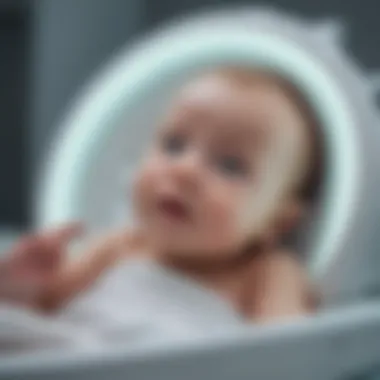
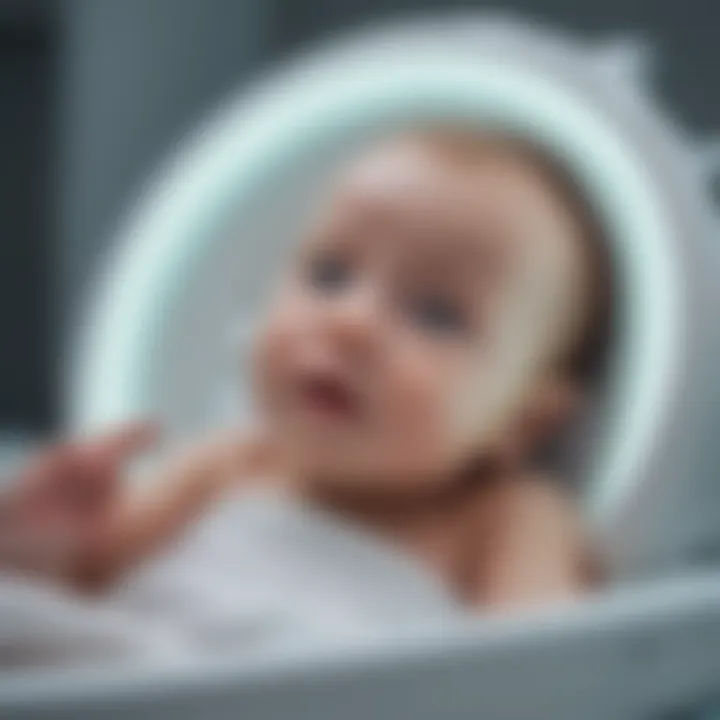
Blood group incompatibilities can also contribute to hyperbilirubinemia, particularly in newborns. This occurs when an infant's blood type differs from that of the mother, leading to an immune response that destroys the baby's red blood cells. The primary characteristic here is the rapid rise in indirect bilirubin due to the hemolysis.
This topic is pivotal within the scope of hyperbilirubinemia because it emphasizes the importance of blood typing and cross-matching during maternal care. Quick identification can help mitigate risks, particularly in neonates. A unique feature of this cause is how it interconnects maternal and fetal health, illustrating how complications can arise even before birth.
Hepatic Causes
Liver Diseases
Liver diseases represent the hepatic cause of hyperbilirubinemia and encompass a variety of conditions such as viral hepatitis, cirrhosis, and alcoholic liver disease. The primary challenge in these cases is that the liver itself is compromised, impairing its ability to conjugate and excrete bilirubin efficiently.
This factor makes liver diseases a prominent area of concern in hyperbilirubinemia discussions. A unique aspect here is the direct relationship between liver function and bilirubin levels—when the liver falters, so does bilirubin metabolism. Observing patients with liver diseases can yield insights not just about jaundice but also about overall health and liver function.
Metabolic Disorders
Metabolic disorders are another crucial subgroup causing hepatic hyperbilirubinemia. Conditions like Gilbert's syndrome or Crigler-Najjar syndrome can directly impede bilirubin metabolism due to genetic factors. For instance, Gilbert's syndrome, characterized by mild unconjugated hyperbilirubinemia, illustrates how genetic predispositions affect bilirubin management.
The uniqueness of metabolic disorders in this context lies in their chronic nature. They often require long-term monitoring and lifestyle adjustments. Recognizing these disorders can significantly inform treatment approaches and patient education efforts.
Post-Hepatic Causes
Bile Duct Obstruction
Obstruction of the bile duct is a kind of post-hepatic cause leading to hyperbilirubinemia. This condition occurs when something blocks the bile duct, preventing bile—as well as bilirubin—from being excreted from the liver into the intestines. The resultant bile builds up, manifesting in conjugated hyperbilirubinemia.
A key characteristic of bile duct obstruction is that jaundice can develop quite suddenly, often accompanied by other symptoms such as dark urine and pale stools. This condition reveals how structural anomalies can affect biochemical processes. Understanding this aspect can lead to targeted interventions such as imaging studies and possibly surgical procedures.
Gallstones
Lastly, gallstones signify another common post-hepatic cause of hyperbilirubinemia. These hard deposits can form in the gallbladder and migrate to the bile ducts, causing a blockage. The crucial aspect of gallstones is their potential to cause acute cases of jaundice, necessitating immediate medical intervention.
Understanding how gallstones create a mechanical barrier informs the understanding of bilirubin management. With gallstones, as with bile duct obstruction, timely intervention is often critical to prevent further complications and to relieve symptoms effectively.
Hyperbilirubinemia can be an indicator of underlying health issues, necessitating comprehensive evaluation.
Clinical Presentation of Hyperbilirubinemia
The clinical presentation of hyperbilirubinemia is pivotal in understanding its impact and management, especially in newborns. Recognizing the signs and symptoms early can help in timely interventions, preventing potential complications. Bilirubin serves as a convenient marker, not only indicating hepatic function but also the overall health status of an infant. Hence, a detailed exploration into clinical signs related to hyperbilirubinemia becomes essential, both for diagnosis and ongoing treatment monitoring.
Signs and Symptoms
Jaundice
Jaundice, characterized by a yellowish discoloration of the skin and sclerae, is perhaps the most recognizable sign of hyperbilirubinemia. This occurs when excess bilirubin accumulates in the bloodstream, eventually percolating into tissues. The key aspect of jaundice in infants is its time of appearance; if jaundice emerges within the first 24 hours of life, it often raises red flags for underlying conditions. Its visualization serves not just as a symptom but as a cue for further evaluation of bilirubin levels.
This particular sign can be beneficial as it allows for quick identification. A unique feature of jaundice lies in its progression; it moves from the head downward through the body as bilirubin levels rise, providing valuable insights regarding severity. However, while easily observable, jaundice cannot alone indicate the cause, often requiring additional diagnostics to pin down the underlying issue.
Itching
Itching, or pruritus, emerges as another notable symptom related to hyperbilirubinemia, especially in adults rather than infants. This discomfort arises from bile salts accumulating under the skin due to cholestasis. The key characteristic of itching in this context is often its persistence; it can lead to marked distress and sleep disturbances. This symptom might not be the most common in newborns, but when it does appear, it signals that bilirubin’s effects are transcending mere yellowing of the skin. The distinct sensation of itching can serve as an alert, hinting that the underlying cause may be more progressive. However, it can detract from the overall quality of life, leading to excessive scratching and potential skin infections, proving detrimental over time.
Dark Urine
Dark urine offers another crucial indicator of hyperbilirubinemia that benefits clinicians' assessments. This symptom results from bilirubin being excreted in the urine instead of being properly processed by the liver and bile ducts. The key characteristic is the color change; typical urine is usually pale, whereas the dark hue suggests that bilirubin is present complicating the body's filtration process. Dark urine serves as a helpful clue pointing towards significant hyperbilirubinemia, guiding medical professionals toward appropriate diagnostic paths. Its unique feature lies in its timing; unlike jaundice, dark urine might appear prior to visible signs of hyperbilirubinemia, enabling early detection. However, its presence alone does not indicate the severity or cause of hyperbilirubinemia and necessitates thorough investigation for further clarity.
Diagnostic Approaches
Blood Tests
Blood tests are essential for the assessment of bilirubin levels in suspected hyperbilirubinemia. They help delineate between unconjugated and conjugated bilirubin, providing insights into possible underlying causes. The key characteristic lies in the precision of bilirubin measurement; depending on the level present, clinicians can better strategize management. These tests facilitate timely interventions and establish baselines for monitoring. However, they also require careful interpretation, as results can vary based on factors like age and health status, necessitating a holistic view. A unique feature of blood tests is that they provide immediate results, allowing healthcare providers to act quickly and reduce any potential complications associated with rising bilirubin levels.
Imaging Studies
Imaging studies, while not the primary method for diagnosing hyperbilirubinemia, are instrumental in identifying anatomical causes such as bile duct obstructions. Using ultrasound or CT scans can give vital information that blood tests alone cannot. The key advantage is that imaging studies allow visualization of the liver and biliary system, helping ascertain whether structural anomalies contribute to hyperbilirubinemia. They can confirm diagnosis and help in planning further treatment strategies. Nevertheless, these studies might not be immediately available, resulting in possible delays in intervention when needed urgently. The unique capacity to visualize underlying conditions gives imaging studies a complementary role in conjunction with other diagnostic measures, forming a more complete picture.
Overview of Phototherapy
Phototherapy stands as a cornerstone in the management of hyperbilirubinemia, particularly among neonates. This approach aids in substantially lowering elevated bilirubin levels, a condition that can lead to serious complications if left untreated. In essence, phototherapy utilizes specific light wavelengths to enhance the body's natural ability to process and eliminate bilirubin. The significance of this treatment is underscored by its demonstrated effectiveness in preventing severe jaundice and its potential complications, such as kernicterus.
Mechanism of Action
Photodegradation of Bilirubin
At the heart of phototherapy's mechanism lies the process known as photodegradation of bilirubin. This process involves exposing bilirubin to light, leading to its breakdown into less harmful byproducts. The main characteristic of this mechanism is its efficiency; bilirubin is transformed into soluble isomers that can be easily excreted through urine and bile. This transformation is considered beneficial as it minimizes the risk of bilirubin accumulation that can lead to neurological damage.
"Phototherapy effectively transforms toxic bilirubin into harmless substances, making it a lifesaver for many newborns."
One unique aspect of photodegradation is its reliance on specific light wavelengths, predominantly blue light. This method of treatment has shown to be effective, with minimal invasiveness compared to alternatives like exchange transfusions. However, it's important to also consider that the effectiveness can vary based on factors such as the intensity of the light and the duration of exposure.
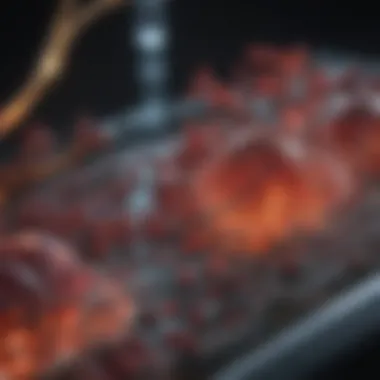

Types of Light Used
The types of light used in phototherapy also play a crucial role in its success. Conventional phototherapy primarily utilizes blue light, known for its effectiveness in converting bilirubin into its soluble form. The characteristic of this light is its ability to penetrate the skin effectively, making it the preferred choice for many clinicians. Additionally, this method is widely accepted due to its ease of use and relatively low risk of side effects.
On the other side, new technologies have introduced other light sources, such as LED devices. One beneficial feature of LEDs is their energy efficiency and longer lifespan, which can decrease operational costs. Yet, the disadvantage is that not all LED systems may provide the same depth of light penetration as more traditional options, which could affect efficacy in certain cases.
Types of Phototherapy
Conventional Phototherapy
Conventional phototherapy employs the exposure of a newborn to continuous blue light, typically in an incubator setting. This approach remains popular due to its straightforward implementation and well-established protocols. It primarily targets the treatment of mild to moderate hyperbilirubinemia. A unique characteristic of this method is its widespread availability in neonatal units around the world, contributing to its strong recommendation in clinical guidelines.
One advantage of conventional phototherapy is its balance between efficacy and safety. However, a noted downside is that this method requires the continuous monitoring of the infant's bilirubin levels, as the treatment must be adjusted based on ongoing assessments.
Intensive Phototherapy
Intensive phototherapy ramps up treatment by using higher intensity light sources or additional phototherapy units. This is ideal in circumstances where rapid decreases in bilirubin levels are essential, such as in cases of severe hyperbilirubinemia. The key characteristic is the combined use of multiple light sources to enhance bilirubin breakdown.
Its strong advantage lies in its ability to achieve faster results than conventional methods. However, increased intensity may also provoke slightly higher risks for adverse side effects, such as skin irritation or dehydration, which necessitate careful monitoring throughout therapy.
Fiber Optic Phototherapy
Fiber optic phototherapy represents a novel approach that utilizes fiber optic cables to deliver light directly onto the skin's surface. This method’s unique feature is its versatility and ability to treat infants while allowing more freedom of movement. It facilitates effective treatment even while the newborn is in a more comfortable position, which can ease parental anxiety.
The advantage of fiber optic systems is that they can be positioned strategically on the infant’s body, targeting specific problem areas. However, the effectiveness of this method can depend on the proper placement and might not be suitable for all cases of hyperbilirubinemia. Overall, it's a promising avenue, though it may not replace more traditional methods.
In summary, phototherapy serves an essential role in managing elevated bilirubin levels, with various lighting techniques catering to specific clinical needs. By utilizing the mechanisms of photodegradation and employing innovative technologies, healthcare providers can offer tailored treatment options to meet the diverse challenges posed by hyperbilirubinemia.
Effectiveness of Phototherapy
Phototherapy plays a crucial role in managing hyperbilirubinemia, particularly in newborns. Understanding its effectiveness leads to optimal patient outcomes. The method’s primary function is to lower bilirubin levels in the blood, which, if left unchecked, can cause serious health issues. With the rising cases of jaundice due to elevated bilirubin, healthcare providers must grasp the nuances of phototherapy.
Comparative Studies
Phototherapy vs. Exchange Transfusion
One of the standout comparisons in treating hyperbilirubinemia is the effectiveness of phototherapy compared to exchange transfusion. Phototherapy is less invasive, relying on light to break down bilirubin in the skin, whereas exchange transfusion involves replacing a percentage of the infant's blood with donor blood.
This non-invasive nature of phototherapy makes it a popular choice for initial treatment. The key characteristic here is the safety profile. Phototherapy can usually be initiated without the risks associated with blood transfusions, which include reactions and infections.
However, in cases of severely elevated bilirubin levels, exchange transfusion becomes essential, acting as a salvage measure. The unique aspect is that while phototherapy helps prevent bilirubin from reaching toxic levels, it may not always be sufficient for extreme cases. This dual approach signifies a balance between aggressiveness and caution in treatment protocols.
Long-Term Outcomes
Discussing long-term outcomes, studies indicate that phototherapy is generally effective without notable lasting adverse effects when applied properly. It serves not only as an immediate solution but also fosters better developmental trajectories for infants. Long-term monitoring shows that those treated with phototherapy tend to exhibit no significant differences in developmental milestones compared to their peers.
What makes this aspect beneficial in our discussion is the reduced complications associated with blood transfusions. Children who undergo exchange transfusion may face potential issues like infection and sensitivity reactions later in life, making phototherapy a compelling choice when bilirubin levels are manageable. Nevertheless, vigilance is necessary since bilirubin levels must be monitored continuously to ensure the effectiveness of phototherapy.
Dosage and Duration
Correct dosage and duration of phototherapy are fundamental to its effectiveness in treating hyperbilirubinemia. This section will clarify treatment guidelines.
Guidelines for Treatment
Guidelines for treatment underscore the significance of determining the appropriate duration and intensity of phototherapy. Recommendations often depend on the infant's bilirubin levels and age in hours. The key characteristic of these guidelines is their foundation in clinical evidence and the specificity to different scenarios.
Such guidelines offer flexibility, allowing for tailored treatment. However, one must tread carefully. There is a risk of under or overtherapy, both of which could pose serious consequences. Adhering closely to these protocols ensures that infants receive the necessary care without unnecessary interventions.
Monitoring Protocols
Implementing effective monitoring protocols is paramount to sustaining treatment efficacy. Regular assessments of bilirubin levels allow for timely adjustments in therapy. These protocols often include daily evaluations in the first few days of life, particularly for high-risk infants.
The advantage of stringent monitoring is that it provides data to guide decisions, such as increasing light exposure or transitioning to other treatments if bilirubin levels plateau. However, there can be a downside—frequent blood draws can place stress on both the infant and parents. Balancing the need for oversight while minimizing distress is critical.
Effective management of hyperbilirubinemia is a mixture of understanding the science behind phototherapy and compassionate care.
Potential Side Effects of Phototherapy
Phototherapy has emerged as a cornerstone in the management of hyperbilirubinemia. However, like any treatment modality, it doesn’t come without its drawbacks. Understanding these potential side effects is crucial for healthcare providers and families alike. Addressing these concerns ensures that the benefits of phototherapy can be maximized while minimizing any adverse effects. This section will break down the common and long-term side effects associated with phototherapy, providing a balanced view of its implications in the treatment of hyperbilirubinemia.
Common Adverse Effects
Skin Irritation


One of the most frequently observed side effects of phototherapy is skin irritation. Newborns exposed to phototherapy often develop rashes or areas of redness on their skin. This effect stems from the constant exposure to light, which can be abrasive and induce a response from the skin.
The essential aspect of skin irritation in this context lies in its relativity. It often resolves quickly once the treatment ends, suggesting that while it can be alarming for caregivers, it typically does not lead to long-term complications.
Nevertheless, it’s important for practitioners to take precautions. Dressing the infant properly or applying barriers can reduce the risk of irritation. Understanding this transient response allows parents to engage with the treatment with more confidence.
Dehydration
Dehydration is another concern with phototherapy, as it can increase fluid loss due to the higher ambient temperature associated with the light. The skin's exposure to light plays a key role in processing bilirubin, yet this increases metabolic activity, leading to a loss of fluids and electrolytes.
Monitoring hydration status becomes imperative during treatment. Dehydration can lead to more severe complications if not addressed. Maintaining proper fluid intake is vital. The uniqueness of dehydration as a side effect is that it necessitates a proactive approach to care. Healthcare providers must assess fluid balance regularly and educate parents about the signs of dehydration, reinforcing the importance of monitoring.
Long-Term Concerns
Impact on Visual Development
As we consider the long-term implications of phototherapy, one notable concern is the potential impact on visual development. Infants receiving this treatment are exposed to specific wavelengths of light, which raises questions about how this might correlate with their visual outcomes as they grow.
Key oppositions argue that extensive light exposure could disrupt the retinas or neural pathways responsible for vision. However, more research is needed. In many cases, the immediate benefits of lowering bilirubin levels outweigh the speculative risks over visual development. Nonetheless, practitioners must remain diligent about follow-ups regarding the infant's visual progress, adopting a watchful approach while external factors are comprehensively assessed.
Risk of Hyperthermia
Risk of hyperthermia is an important consideration in infants undergoing phototherapy. This can occur as an uncontrolled increase in body temperature during the treatment.
The ability of phototherapy to warm the infant's body inadvertently could lead to hyperthermia, particularly in those who are sensitive or unable to self-regulate their temperature effectively. The risk intensifies if infants lack adequate monitoring.
Practitioners should integrate systematic temperature checks into the protocol of care. This includes educating caregivers about signs of overheating and ensuring that proper environmental controls are in place. The unique feature of focusing on hyperthermia is that it shifts some responsibility to the caregiver, ensuring an optimal care experience while highlighting the need for vigilance.
In essence, while phototherapy serves a critical role in treating hyperbilirubinemia, it is vital to remain aware of its potential side effects. This awareness allows for a better management plan, enhancing safety and treatment efficacy.
Innovative Treatment Approaches
Innovative treatment approaches in managing hyperbilirubinemia are quite crucial, especially considering the complexity of the condition and the specific needs of newborns. As bilirubin levels rise, timely and effective interventions become essential to prevent potential complications. Exploring advancements in technique and adjunctive therapies opens a window into more effective management strategies that can dramatically improve outcomes.
Advancements in Phototherapy Techniques
New Light Sources
One remarkable aspect of new light sources for phototherapy is their ability to enhance the photodegradation of bilirubin. This involves utilizing advanced LED and fluorescent lights that emit specific wavelengths, maximizing the effectiveness of treatment. The key characteristic of these newer light sources is their energy efficiency, which allows for longer treatment durations without excessive heat generation. This is particularly beneficial in neonatal intensive care units where managing the environment is critical.
For example, some systems can switch seamlessly between blue and white light, adapting to the specific needs of the infant. The unique feature of these light sources lies in their targeted action on bilirubin while minimizing exposure to other harmful wavelengths. However, while these sources are popular for their effectiveness, they do have some disadvantages, such as costs and the necessity for frequent recalibration to ensure optimal performance.
Automated Monitoring Systems
Automated monitoring systems have revolutionized how healthcare providers manage phototherapy in hyperbilirubinemia cases. These systems come equipped with sensors and software that continually track bilirubin levels, adjusting therapy in real-time based on the patient’s changing condition. The key feature of these systems is the capacity for 24/7 monitoring, giving peace of mind to both medical staff and parents.
The unique advantage of an automated system is its ability to alert medical personnel of trends and potential issues before they escalate into serious complications. Parents can also engage with these systems via mobile applications that allow them to monitor their newborn's therapy progress. Despite these clear benefits, challenges exist, like the need for reliable power sources and potential technical failures that could interrupt the continuous monitoring process.
Adjunctive Therapies
In addition to phototherapy, adjunctive therapies play a vital role in the overall management of hyperbilirubinemia. These treatments complement light therapy, offering additional avenues to reduce bilirubin levels effectively.
Intravenous Immunoglobulin
Intravenous immunoglobulin (IVIG) is significant as it targets cases of hemolytic disease of the newborn, where antibody-mediated destruction of red blood cells contributes to elevated bilirubin. Its key characteristic lies in its ability to neutralize the antibodies that are responsible for this hemolysis, ultimately decreasing the bilirubin load on the infant’s system.
A unique feature of IVIG is its relatively quick action, leading to rapid declines in bilirubin levels when compared to phototherapy alone. However, the use of IVIG does not come without its disadvantages; potential side effects can include allergic reactions, and careful monitoring is necessary to avoid complications.
Other Medications
Other medications also support the management of hyperbilirubinemia, particularly when underlying metabolic disorders are involved. Specific agents may help enhance bilirubin excretion or provide supportive care as needed. Notably, the characteristic benefit of these medications is that they function as adjuncts, bridging gaps where phototherapy may not be sufficient.
The unique feature of these medications is their adaptability, as healthcare providers may adjust dosages and combinations based on individual patient responses. Nonetheless, risks of interactions with other therapies must be carefully navigated to ensure the safety and effectiveness of treatment.
"Innovative treatment strategies, including advances in phototherapy and the incorporation of adjunctive medications, pave the way for improved outcomes in neonates suffering from hyperbilirubinemia."
Overall, understanding the full spectrum of innovative treatment approaches adds a layer of complexity and depth to the management strategies available for hyperbilirubinemia. As research progresses, the integration of these new methods can further enhance the care provided to one of our most vulnerable populations.
Ending
The conclusion serves as the final pitstop in a thorough exploration of hyperbilirubinemia and the role of phototherapy in its management. It is the moment to reflect on everything discussed, stating not only what has been learned but also illustrating why this knowledge is essential for healthcare professionals, researchers, and students alike. The significance of hyperbilirubinemia—especially in newborns—cannot be overstated, as early identification and management can greatly impact long-term outcomes.
Summary of Key Points
A succinct summary at this stage can distill complex information into digestible morsels:
- Hyperbilirubinemia is characterized by elevated bilirubin levels that often present as jaundice in newborns.
- Various causes ranging from pre-hepatic to post-hepatic can contribute to the condition, necessitating a nuanced understanding of each.
- Phototherapy emerges as a frontline treatment, utilizing light to facilitate the breakdown of bilirubin.
- While effective, several side effects must be monitored, ranging from minor skin irritations to concerns about long-term neurological impacts.
- Innovative techniques and adjunctive therapies are on the horizon, signaling a shift in comprehensive management strategies.
In drawing these points together, readers can appreciate not only the pathology of hyperbilirubinemia but also the dynamic approach to its treatment.
Future Directions in Management
Looking ahead, the management of hyperbilirubinemia is likely to evolve considerably. Future research will potentially deepen our understanding of bilirubin metabolism and phototherapy effectiveness.
- Advancements in Technology: The introduction of more sophisticated monitoring systems can lead to better real-time data on bilirubin levels.
- Personalized Treatment Plans: Based on genetic and environmental factors, individualized phototherapy regimens could enhance outcomes.
- Exploration of Novel Agents: Research into medications that might complement phototherapy could open new treatment avenues.
As we progress in understanding and addressing hyperbilirubinemia, it remains essential to consider ethical implications and the patient's quality of life. Embracing a multi-disciplinary approach could yield improved strategies that not only lower bilirubin levels but also enhance our newborns' overall health.
The future lies in understanding not just how to treat, but how to prevent complications associated with hyperbilirubinemia.
The journey doesn’t end here. Each development calls for continued scrutiny and dialogue within the community, ensuring that the leap from understanding to practical application is as effective as possible.
In essence, the conclusion not only wraps up the discussion neatly but also acts as a springboard, nudging forward exploration and comprehension of hyperbilirubinemia and the associated therapies.







